#Ken Scott
Text
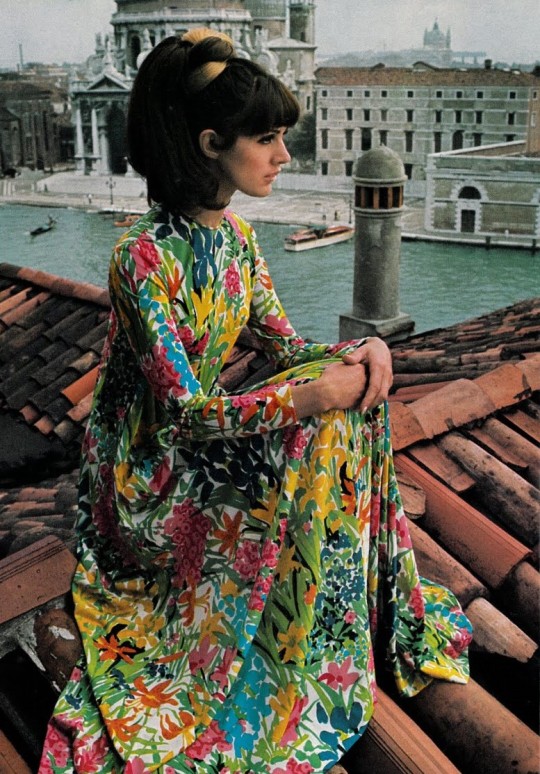
David Bailey - Dress by Ken Scott (Vogue UK 1966)
#david bailey#ken scott#vogue#photography#fashion photography#vintage fashion#vintage style#vintage#retro#aesthetic#beauty#sixties#60s#60s fashion#60s model#1960s#1960s fashion#swinging sixties#editorial#vogue uk
225 notes
·
View notes
Text
Balin being my (second) favorite dwarf for almost 5 minutes
And also a wonderful father figure for Thorin and a sweet father-in-law for Bilbo
#the hobbit#the lord of the rings#lotr#the hobbit edit#lotr edit#tolkien#balin#bilbo baggins#thorin oakenshield#bagginshield#thilbo#martin freeman#richard armitage#ken scott
1K notes
·
View notes
Text
A song featuring George Harrison and Ringo Starr.

Ringo and George, 1966
A hitherto forgotten soundtrack created more than half a century ago, featuring Maestro Saroda Ustad Aashish Khan performing in tandem with the iconic Beatles By George Harrison and Ringo Starr has now been found, restored and released - much to the delight of fans and music lovers.
The soundtrack, titled ‘Radhe Shaam', which was allegedly recorded in 1968 at Trident Studios at the height of Beatlemania, was released on November 10, 2021. In a song produced and written by Suresh Joshi, a veteran journalist and TV presenter with a long track record, soulful performance Ustad Khan is gracefully accompanied by a rhythm guitar George and Ringo's drumming.
youtube
Mister Joshi, who was friends with George Harrison, was the very person who introduced him to the famous Indian musician Ravi Shankar, who had a great influence on the star and, as is known, taught him how to play the sitar.
At that moment, George and Ringo were taking a break from recording Hey Jude in the studio.
“I was working on the music for my documentary ‘East meets West’ when George (Harrison), who was a good friend of mine, offered to play for the soundtrack. As soon as he decided to participate, Ringo also kindly came to the rescue,” Joshi recalled.

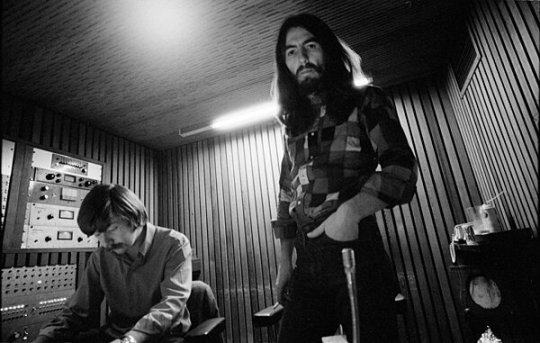
George with engineer Ken Scott at Trident Studios in late October 1970.
However, as soon as the recording was completed, Suresh took the master tape to his attic in his Birmingham home and forgot about it until years later he met Deepak Pathak, co-founder of Maharaja Organics.
“I became friends with Deepak when I was alone at home during the pandemic. During one of our conversations, I told him that I had produced and recorded a song with maestro Saroda Ustad Aashish Khan, Ringo Starr and George Harrison, which was never released,” Joshi explained.

“At that time The Beatles were in the process of breaking up, and they had various problems, so no one wanted to [release the track],” Aashish also said.

Pathak convinced Joshi to let him listen to the soundtrack.
As soon as Pathak heard this ‘fundamental work’ and became convinced that it should be released to a wider audience. He sent the master tape to the music producer Suraj Shinhu, who restored it and prepared it for release.
“I am delighted that we have managed to save this fundamental work of Suresh. I persevered with the recovery process, which was technically difficult, but extremely effective,” Shinh said.

John Barham, Ringo and Suresh Joshi
Despite the fact that this song was written more than fifty years ago, it is still relevant and will be close to modern youth, Joshi agreed.
“The song revolves around the concept that we are all one, and that the world is our oyster shell, something that we all realized during this pandemic. A song written more than 50 years ago is more relevant today than ever,” Joshi concluded.
Earlier, the track was given to 100 visitors of the Liverpool Museum to listen to The Beatles. Museum Manager Paul Perry said that the invited audience who listened to the song, including Mr. Joshi, “fell in love with it.”
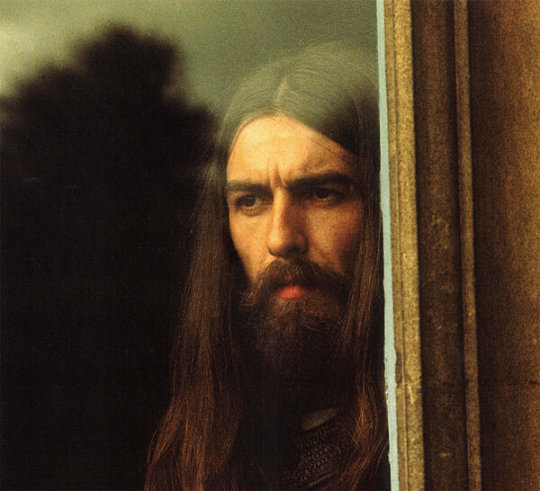
“Without any doubt, it was George's guitar, [and] it felt like he was here among us. And, also, without a doubt, the drums belonged to Ringo.”
However, opinions and memories about the time and circumstances of the track's recording differ.
From Matt Hurwitz:
“Actually, this is not 1968, but the song was recorded at Trident on March 10, 1970, as described in detail in my article about the recording of "All Things Must Pass". George helped Aashish Khan, who was asked to write an Indian-themed pop song for an Indian director, but the track was never used.”

The session was dedicated to the future project of Aashish Khan and John Barham. The musicians were Hashish Khan, George Harrison, Eric Clapton, Ringo Starr, Billy Preston and Klaus Voormann (Foreman). Everyone, with the exception of Khan, will take part in the recording of the album George's “All Things Must Pass".
So he plays the lead guitar Clapton, and George plays the rhythm guitar. Khan talked about a song called ’In Praise Of Lord (We Are All Children Of God)' that they were supposed to record ten years ago. It looks like they also recorded a song by Mr. Joshi ‘Radhe Shaam'. At that time, the song had no title, which may explain why it was not mentioned for many years.
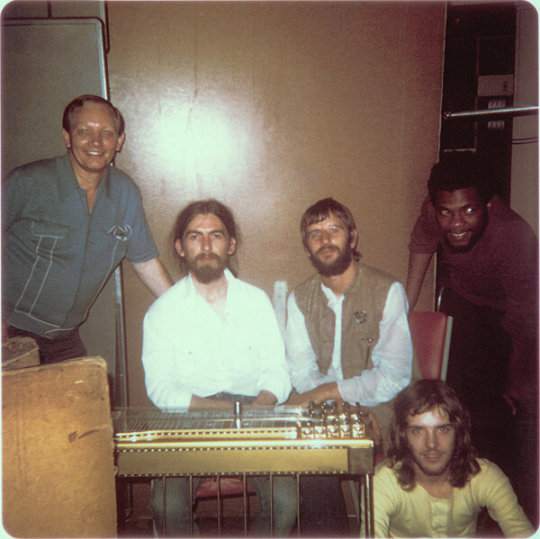

Pete Drake and George
Album John Barham and Aashisha Khan was released in 1973 under the name ”Jugalbandi" on Elektra Records, both superstar tracks of March 1970 did not hit it.
#Youtube#george harrison#ringo starr#beatlemania#music#my music#music love#musica#history music#rock music#pop#rock photography#ken scott#1970s#John Barham#Suresh
24 notes
·
View notes
Photo

Veruschka wearing Ken Scott, photographed by Henry Clarke at the villa of architect Michele Busiri Vici in Circeo, Italy for Vogue, November 1965.
#veruschka#ken scott#henry clarke#vogue#1965#fashion photography#photo shoot#fashion#photography#1960s
34 notes
·
View notes
Text
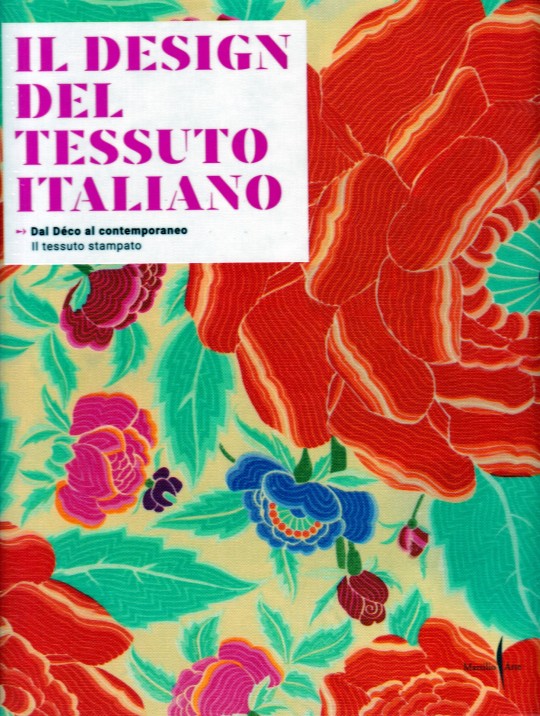

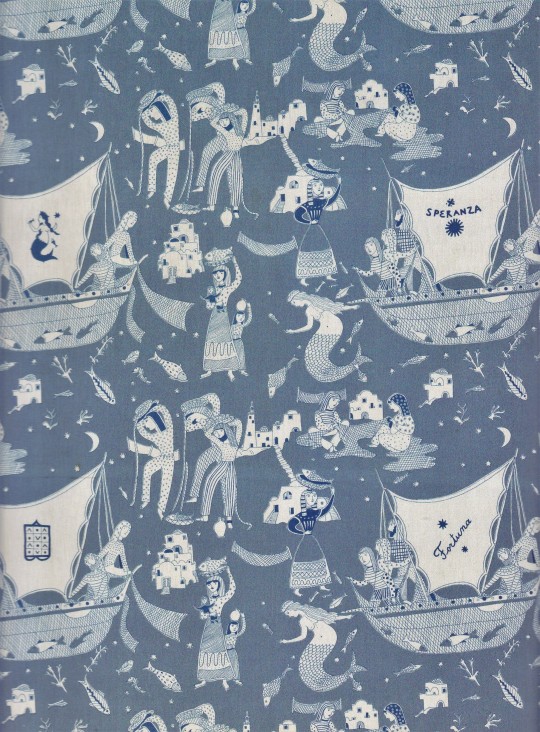


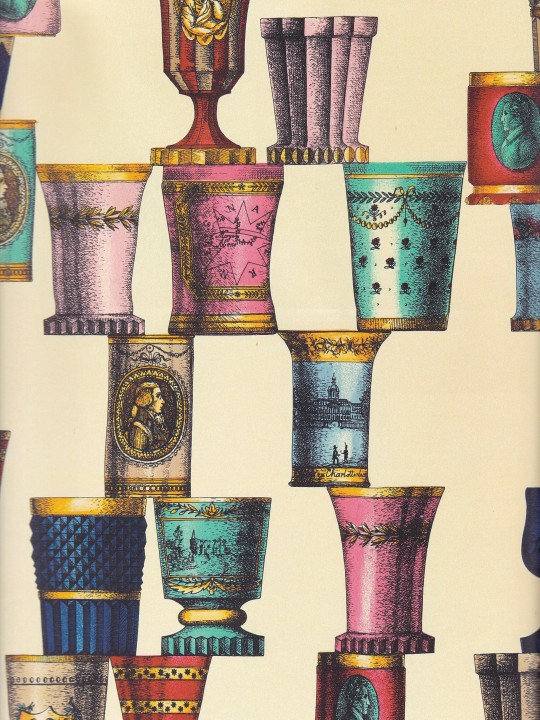
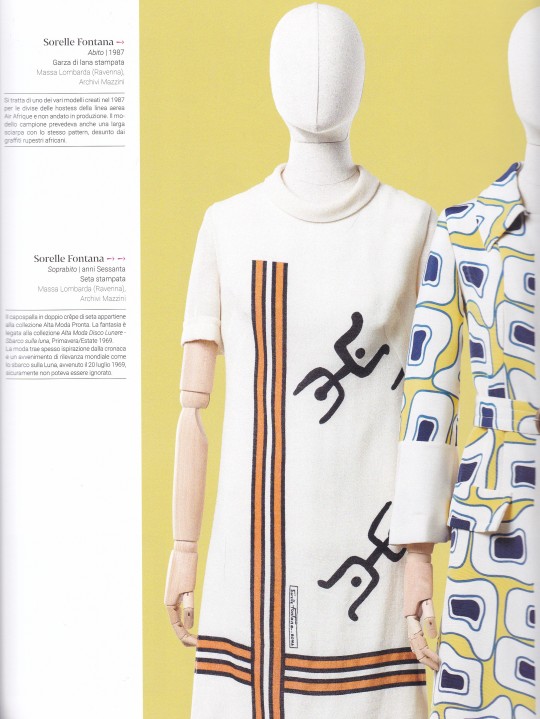

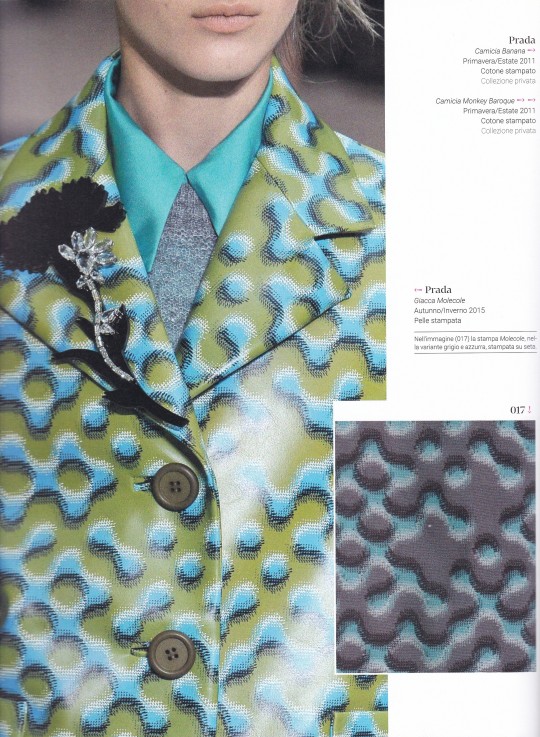
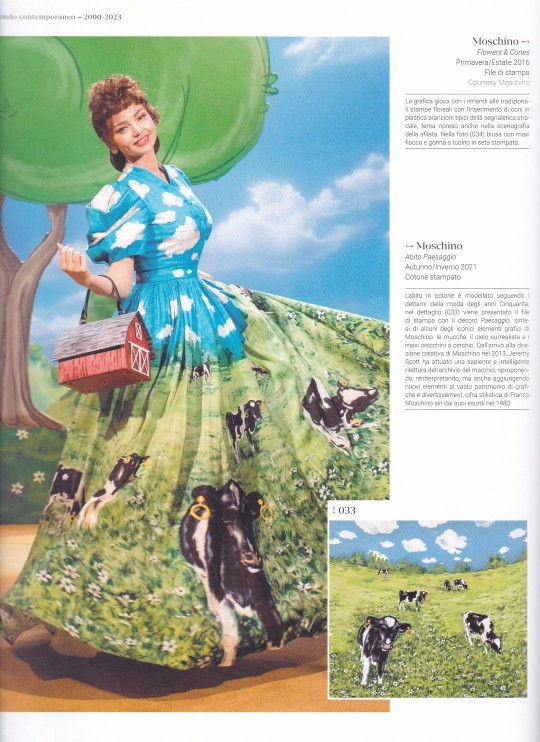

Il design del tessuto italiano
Dal Déco al contemporaneo Il tessuto stampato
Vittorio Linfante, Massimo Zanella
Marsilio Arte, Venezia 2023, 240 pagine, oltre 500 illustrazioni, 24,8 x 29,8 cm, ISBN 9791254630907
euro 48,00
email if you want to buy [email protected]
Dalle sperimentazioni di Lucio Fontana e Gio Ponti ai motivi optical di Germana Marucelli e caleidoscopici di Emilio Pucci; dagli effetti trompe-l'oeil di Roberta di Camerino alle sensibilità pop di Ken Scott, Elio Fiorucci, Gianni Versace e Franco Moschino; dal lavoro sull'heritage di Prada, Valentino e Marni alla valorizzazione dell'archivio aziendale di Missoni, fino alle ibridazioni grafiche di Maison Laponte, Gentile Catone, Colomba Leddi e IUTER: artisti, stilisti, designer e aziende che hanno contribuito a costruire la fama del tessuto italiano nel mondo dai primi del Novecento al contemporaneo. Una storia che si intreccia profondamente con la nascita del concetto di made in Italy, contribuendo in modo significativo alla fama internazionale dell'Italia come baluardo della moda e del design di alta qualità. Oltre 500 illustrazioni, fotografie e disegni preparatori - molti inediti e provenienti da archivi aziendali e privati - raccontano i più importanti successi creativi del nostro Paese.
05/06/23
orders to: [email protected]
ordini a: [email protected]
twitter:@fashionbooksmi
instagram: fashionbooksmilano
designbooksmilano
tumblr: fashionbooksmilano
designbooksmilano
#design tessuto italiano#Fortuny#Lucio Fontana#Fornasetti#Sorelle Fontana#Gianni Versace#Prada#Moschino#Marni#Gio Ponti#Germana Marucelli#Emilio Pucci#Roberta di Camerino#Ken Scott#Fede Cheti#Fiorucci#Valentino#italian textile design#Gimmo Etro#Lancetti#Brunetta#textiles books#fashion books#fashionbooksmilano#designbooksmilano
22 notes
·
View notes
Text

"Una carta de dos páginas escrita a mano de 1977 por David Bowie que se vendió por 2000 libras en una subasta. La carta fue escrita por él mientras estaba con su manager tras la repentina muerte de Marc Bolan en 1977. Gracias al extraordinario fan de Van der Graaf Generator, Richard Rees Jones, por encontrar esto. En la carta, Bowie le pide a su representante que le compre algunos LPs en la tienda de discos antes de partir hacia Suiza esa noche. Uno de los álbumes es “The Quiet Zone / The Pleasure Dome” de Van der Graaf".
"Siempre ha habido anécdotas de segunda mano sobre conexiones Bowie/VdGG flotando por ahí. Cuando VdGG estaba grabando su álbum "H to He, Who Am The Only One" en 1970, el miembro fundador Judge Smith (que había dejado la banda dos años antes pero fue a Trident Studios para pasar el rato con la banda) me dijo que recordaba que Bowie fue a las sesiones para pasar el rato (puede haber sido donde DB conoció por primera vez a su futuro colaborador Robert Fripp, quien fue invitado al álbum de VdGG). Desde entonces, Hammill ha confirmado que él también recordaba esto".
"En la biografía de Bowie de Peter Doggett de hace unos años, escribe que el eslabón perdido entre las canciones de Bowie Quicksand y Station to Station "fue proporcionado por un artista en cuyo trabajo Bowie se había sumergido alrededor de 1974: Peter Hammill". Doggett continúa destacando la canción "In The Black Room" del álbum de Peter "Chameleon…"".
"También está esta cita del productor de Bowie, Ken Scott, de una entrevista de 1973: "A Bowie le gusta mucho escuchar discos. Si se mete en un artista, comprará todos sus LP y los reproducirá uno a uno. La última vez que puedo recordarlo haciendo eso es con Van Der Graaf Generator. Es un coleccionista, de cualquier cosa, experiencias, influencias, todo".
"A lo largo de los años hubo admiración mutua; Hammill y Bowie se conocieron hace años a finales de los 60, cuando ambos firmaron con Mercury. Cuando la revista Record Collector le preguntó sobre Bowie en 2011, Hammill dijo: 'Lo conocí, firmamos con la misma compañía discográfica por un tiempo. Si hay una similitud, probablemente sea porque cuando armonizamos con nosotros mismos, cubrimos una gran distancia. La mayoría de la gente lo mantiene cerca, pero cubrimos un rango muy amplio. Pensé que 'Scary Monsters' es un álbum maravilloso'".
"Si bien durante mucho tiempo se ha mencionado a Bowie en artículos de prensa como un gran admirador del trabajo de PH/VdGG, nunca pude encontrar ninguna cita personal de él (y, créanme, cuando estaba escribiendo el libro de VdGG realmente lo intenté). Esta carta escrita de puño y letra por Bowie es la primera manifestación que he visto del propio DB que confirma su interés en VdGG. ¡¡Gracias por informar a todos, Richard!!".
Van der Graaf Generator / Hammill en su página de Facebook.
2 notes
·
View notes
Text
"Shallow Grave" (1993) - Danny Boyle
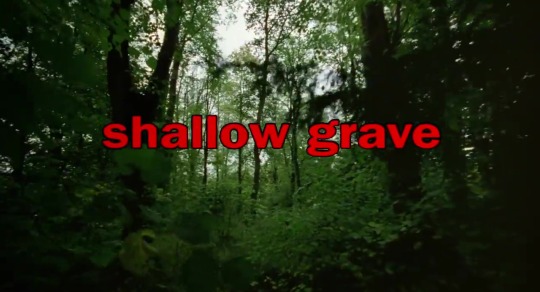

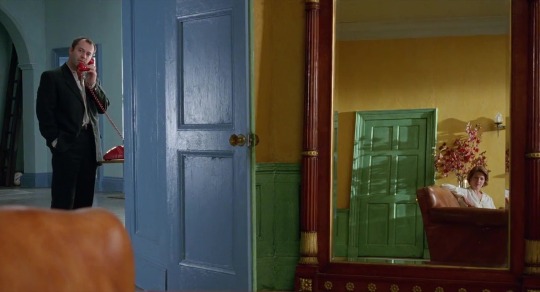





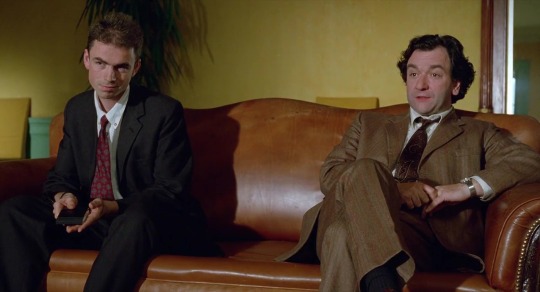

Films I've watched in 2022 (143/210)
Full film:
youtube
#films watched in 2022#Shallow Grave#Christopher Eccleston#Ewan McGregor#Kerry Fox#Keith Allen#John Hodge#Ken Scott#Danny Boyle#motionpicturelover's screencaps
47 notes
·
View notes
Text


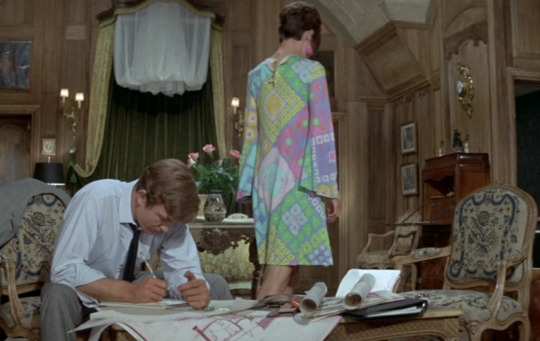


One Dress a Day Challenge
Multicolored August
Two for the Road / Audrey Hepburn as Joanna Wallace
This minidress by Ken Scott only appears in a brief sequence, but Audrey Hepburn said it was one of her favorite costumes in the movie. Apparently, it was very comfortable, unlike some of the other things she wore (such as the PVC pantsuit--yikes!). Ken Scott was an American designer who became known for his use of bright colors and psychedelic designs in the 1960s and 70s.
Also, I just now noticed that she has a pink earring in one ear and a yellow earring in the other!
#two for the road#multicolored august#multicoloured august#audrey hepburn#one dress a day challenge#one dress a week challenge#movie costumes#1960s style#1960s fashion#ken scott#1967 films#1967 movies
26 notes
·
View notes
Text

US Vogue January 1, 1967
Simone d'Aillencourt in a dress printed with flowers from the sunniest garden, in Ban-Lon fibers and nylon jersey. By Ken Scott. Jewelry, by Coppola & Toppo. Hairstyle by Alba & Francesca.
Simone d'Aillencourt dans une robe imprimé de fleurs du jardin le plus ensoleillé, en fibres banLon et jersey de nylon. Par Ken Scott. Bijoux, par Coppola & Toppo. Coiffure par Alba & Francesca.
Photo Henry Clarke
vogue archive
#us vogue#january 1967#fashion 60s#1967#swinging sixties#spring/summer#printemps/été#ken scott#coppola & toppo#alba & francesca#costa smeralda#sardinia#sardaigne#simone d'aillencourt#henry clarke
12 notes
·
View notes
Photo
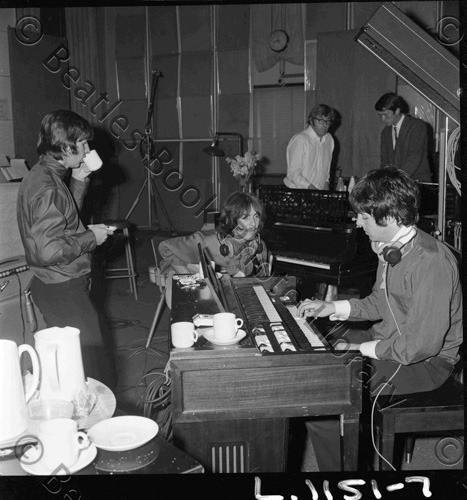


The Beatles on the studio, June 1968; photos by The Beatles Monthly, © Beatles Book Photo Library.
“George had this idea that he wanted to do [the lead vocal for ‘Not Guilty’] in the control room with the speakers blasting, so that he got more of an on-stage feel. So we had to monitor through the headphones, setting the monitor speakers at a level where he felt comfortable and it wouldn’t completely blast his vocal. I remember that John Lennon came in at one point and I turned to him and said ‘Bloody hell, the way you lot are carrying on you’ll be wanting to record everything in the room next door!’ The room next door was tiny, where the four-track tape machines were once kept, and it had no proper studio walls or acoustic set-up of any kind. Lennon replied ‘That’s a great idea, let’s try it on the next number!’ The next number was ‘Yer Blues’ [recording commenced 13 August] and we literally had to set it all up — them and the instruments — in this minute room. That’s how they recorded ‘Yer Blues’, and it worked out great!’” - Ken Scott, The Complete Beatles Recording Sessions (1988)
George Harrison: “There is a blues track on it [the White Album], actually.”
Q: “Oh, really?”
GH: “Called ‘Yer Blues.’ And which is quite bluesy, I don’t know how the purist blues people are going to take it but, you know, it’s still as valid as any blues. […] (jokingly) T-Bone Lennon and B. B. Harrison.” - KPPC-FM interview, broadcast November 4, 1968 (x)
#George Harrison#John Lennon#Paul McCartney#Ringo Starr#Ken Scott#et al#quote#quotes about George#quotes by George#Harrison songwriting#Harrisongs#The Beatles#George and John#1960s#1968#fits queue like a glove
15 notes
·
View notes
Text
It was about a month later [in early 1964] that The Beatles came in to record the songs for their film A Hard Day’s Night. There I was carrying a tape up to the library from Number 3 control room when I noticed coming towards me the two Georges, Harrison and Martin. I freaked and almost screamed like one of the many girls outside, but managed to bite my tongue, a feat for which I would become extremely grateful, especially when considering my many future associations with the two of them.
It wasn’t long before I met Norman Smith, the great engineer who worked on The Beatles’ sessions from the first test recording through Rubber Soul, and I began to get friendly with him. I amazed myself by being very up front and asked him if there was any chance of me poking my head in the door so I could watch the band record for a bit. He hesitated for a second, then told me, “Yes, but keep to the back and don’t let anyone notice you’re there. They can be a bit touchy about new people, so just be a part of the furniture.” Well, of course a cocky 16-year-old couldn’t stop there. “Maybe I could take some pictures?” I asked, assuming I would never get this opportunity again. “Just be part of the furniture and don’t make it obvious,” Norman warned.
Come the day and I have this cheap old camera in hand, and whilst watching the session, I started to take some pictures. There were a number of people there having to do with the movie, including someone who was filming on an 8-millimetre camera (some of this footage has only recently come out on YouTube). After a while The Beatles decided they wanted to try some handclaps on a song and said to the room, “Come on. Everyone down to join in.” I looked over at Norman and he looked over at me and sort of nodded his head to let me know it was OK to do it. “Blimey, I’m gonna go down and clap with The Beatles,” I thought. Could it ever get any better than this?
There were eight or nine of us, including Ringo and Paul, gathered around the mic clapping along to “I Should Have Known Better.” After the take, the two of them went upstairs while the rest of us stayed there looking up at the glass waiting for a decision, then someone came out to the top of the stairs and yelled, “It doesn’t work so forget it. Just come back up here.”
“The moment I set foot in the control room, George Martin came up to me and politely asked, “Excuse me, but who are you?” Caught off guard, I sputtered, “Mr. Martin, sir, I just started up in the tape library a couple of weeks ago … ” and George immediately stopped me mid-sentence and said rather sternly, “Get out!” I thought to myself, “Oh, hell. This is it. I’m going to get fired,” but at least I’d had a chance to be in the studio with The Beatles. Did anything else really matter?
I heard nothing about being fired, and a couple of days later George Martin came up to the tape library and asked me, “So how did the pictures turn out?” Of course I showed him, with much relief, now figuring my job was actually safe. Unfortunately this was just the first of many incidents at EMI where I thought my job was in jeopardy, all of them having to do with The Beatles.
[—from Abbey Road to Ziggy Stardust, Ken Scott]
#aaaaaaa lol#ken scott#abbey road to ziggy stardust#the beatles#george martin#norman smith#1964#tfw random teenagers keep showing up at your recording sessions
13 notes
·
View notes
Text
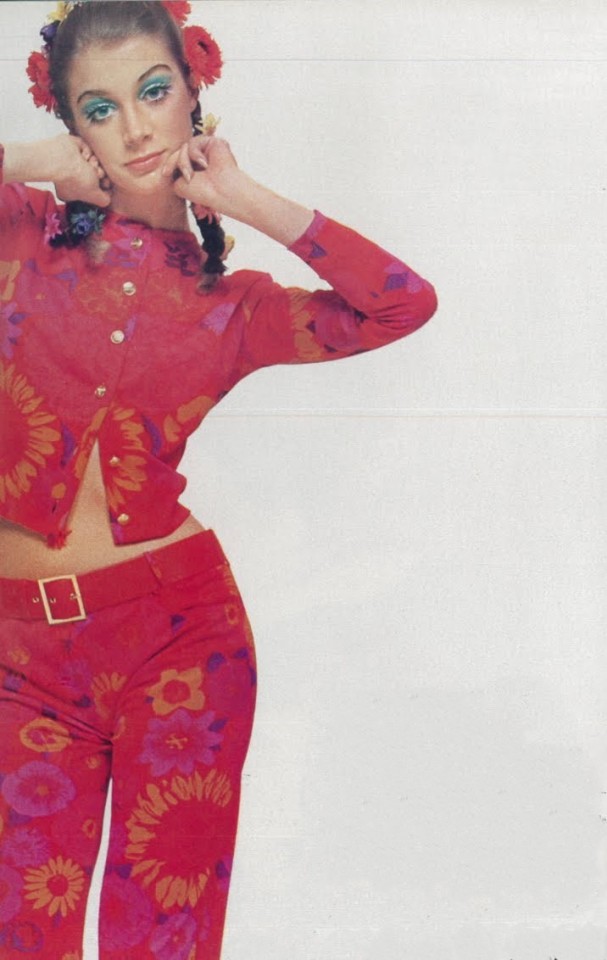
Eric Swayne - Outfit by Ken Scott (Vogue Italia 1967)
#eric swayne#ken scott#vogue#photography#fashion photography#vintage fashion#vintage style#vintage#retro#aesthetic#beauty#sixties#60s#60s fashion#60s model#1960s#1960s fashion#swinging sixties#editorial#vogue italia
243 notes
·
View notes
Audio

David Bowie - The Jean Genie (Album Mix) (1972)
David Bowie
from:
"The Jean Genie” / "Ziggy Stardust" (Single)
"Aladdin Sane" (LP)
Glam Rock
JukeHostUK
(left click = play)
(320kbps)
Personnel:
David Bowie: Lead Vocals / Guitar / Harmonica
Mick Ronson: Lead Guitar / Piano / Backing Vocals
Trevor Bolder: Bass Guitar
Mick “Woody” Woodmansey: Drums
Aynsley Dunbar: Percussion
Produced by Ken Scott / David Bowie
Recorded:
@ The RCA Studios
in New York City, New York USA
on October 6, 1972
Single Released:
on November 24, 1972
Album Released:
on April 13, 1973
RCA Records
#The Jean Genie#Aladdin Sane#David Bowie#Ken Scott#1970's#Glam Rock#RCA Records#Mick Ronson#Mick “Woody” Woodmansey#Trevor Bolder
16 notes
·
View notes
Text
The Jeff Beck Group【Shapes Of Things】和訳Yardbirdsとの違い 平和の夢と絶望
The Jeff Beck Group【Shapes Of Things】和訳Yardbirdsとの違い 平和の夢と絶望
Lyraのブログ更新 #jeffbeck #jeffbeckrip #thejeffbeckgroup #theyardbirds #shapesofthings #ジェフベック #追悼 #truth #jimmypage #AynsleyDunbar #KeithMoon #nickyhopkins #JohnPaulJones #MickyWaller #ronniewood #RodStewart
Jeff Beckが亡くなった。偉大なギタリストとして世界的に知名度が非常に高く、特に日本ではEric Claptonや Jimmy Pageと並ぶ三大ギタリストとして大人気のアーティストだ。
個人的に小さい頃から聴いてきたギタリストであり、Jeffの活動の幅の広さから「驚異的な存在感がある人」と言う印象が強くて、「Jeff Beckは不滅。死ぬ訳がない」と思っていたから天国へ召された事が未だにLyraには信じられません。
「この世界にいて当たり前」なのにもうこの世には居ない。その事が受け入れられないのだ。
Jeff Beckの功績を讃えて今日はJeffのクールなギターが聴ける曲を和訳&解説します。皆んなで彼の名曲を、聴きながらJeff Beckが天国で幸せであるように祈りましょう。
Jeff Beck Rest In Peace!
Continue…

View On WordPress
#aynsley dunbar#Clem Cattini#Jeff Beck#jimmy page#John Carter#john paul jones#Keith Moon#Ken Lewis#Ken Scott#Madeline Bell#Mickie Most#Micky Waller#nicky hopkins#rod stewart#Ronnie Wood#Stephen Goldblatt#the jeff beck group#The Jeff Beck Group【Shapes Of Things】和訳Yardbirdsとの違い 平和の夢と絶望#The Jeff Beck Group【Shapes Of Things】和訳Yardbirdsとの違い 平和への夢と絶望#The Jeff Beck Group【Shapes Of Things】和訳Yardbirds比較 平和の夢と絶望#the yardbirds#ジェフ・ベック命日#ジェフ・ベック死亡#ジェフ・ベック死因#ジェフ・ベッグ逝去#追悼ジェフ・ベッグ
2 notes
·
View notes
Photo

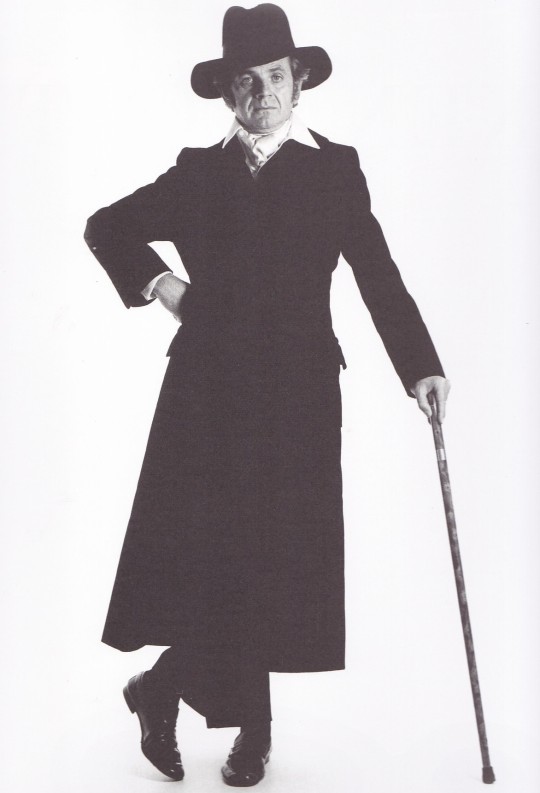
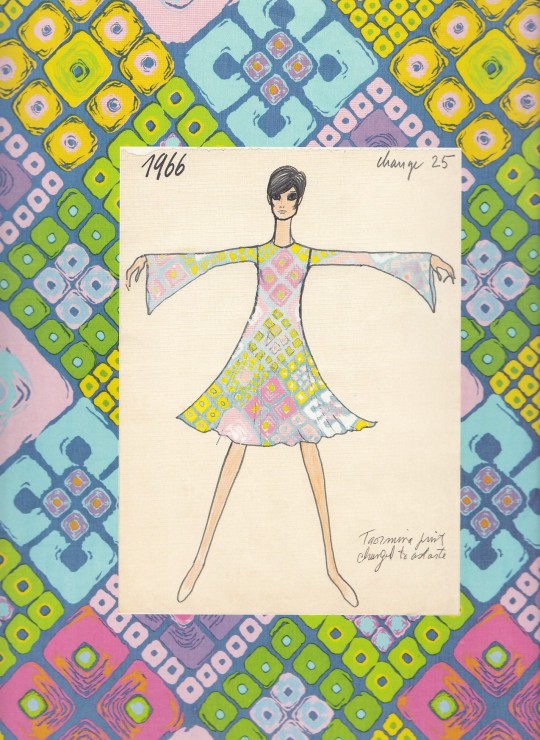

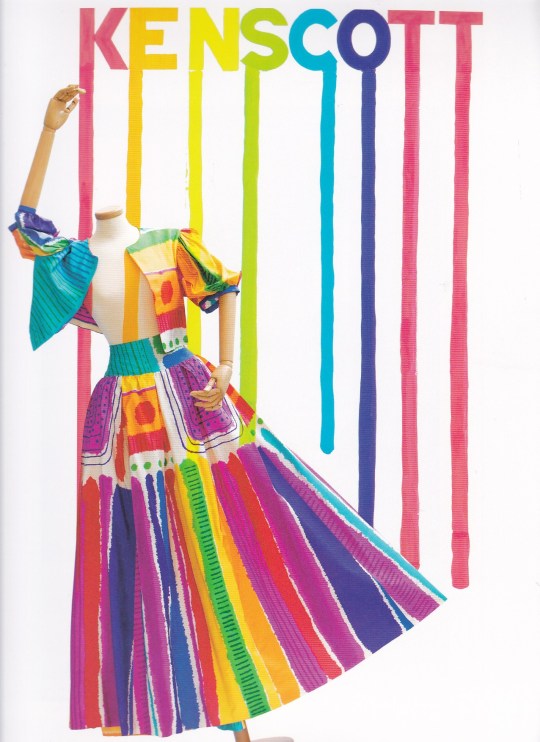





Ken Scott
in collaborazione con Fondazione Ken Scott
Fotografie: Guido Taroni Testi: Shahidha Bari, Federico Chiara, Pierre Léonforte, Renata Molho, Peter Smitters, Isa Tutino, Velasco Vitali
Con un’intervista ad Alessandro Michele di Clara Tosi Pamphili
Direzione Creativa: Armando Chitolina
Rizzoli, Milano 2022, 384 pagine, 25,5 x 33 cm,ISBN 9788891835321
euro 100,00
email if you want to buy :[email protected]
L'arte, i tessuti, i fiori, i vestiti, le sfilate, le case, l'anticonformismo. Gli archivi di Ken Scott si aprono per rivelare il lavoro e la vita di un designer contemporaneo del suo e del nostro tempo. Ken Scott, il "giardiniere della moda", è stato un personaggio eclettico, un creativo a tutto tondo, pittore, creatore di tessuti, designer, ha portato nel mondo della moda la sua passione per l'arte, per i fiori, per il colore. Pittore, amico di Peggy Guggenheim, nato in America e approdato nel 1954 nella Milano del boom economico, Scott ha rivoluzionato il mondo dei tessuti e l'uso delle stampe nella moda. All'inizio degli anni Sessanta ha rinnovato la moda con le sue stampe a fiori grandi, ripetuti e dai colori accesi, con girasoli, peonie, rose, papaveri e ogni tipo di fantasia floreale. Precursore dell'unisex e delle sfilate happening, i suoi abiti vestivano la nobiltà italiana e il jet set internazionale: da Jacqueline Kennedy a Marisa Berenson e Monica Vitti, tutti avevano nel guardaroba i suoi capi e frequentavano il suo ristorante e le sue case, aperte a feste ed eventi mondani. Ha disegnato di tutto, dai vestiti ai mobili, dai costumi da bagno alle scarpe e alle borse, ai piatti e alle lenzuola, collaborando anche con altre aziende. Realizzato in collaborazione con la Fondazione Ken Scott, questo volume è la prima monografia esaustiva sulla sua attività e presenta oltre 600 immagini di materiali provenienti dal suo archivio, gli scatti di Guido Taroni e le foto di grandi fotografi internazionali; i testi raccontano l'uomo e il designer attraverso le parole di autori che l'hanno frequentato e conosciuto e di autorevoli firme contemporanee della moda.
16/11/22
orders to: [email protected]
ordini a: [email protected]
twitter: @fashionbooksmi
instagram: fashionbooksmilano, designbooksmilano tumblr: fashionbooksmilano, designbooksmilano
#Ken Scott#Guido Taroni#Armando Chitolina#arte#tessuti#vestiti#sfilate#giardiniere della moda#jet set internazionale#Jacqueline Kennedy#Marisa Berenson#Monica Vitti#fashion history#fashionbooks#fashionbooksmilano
11 notes
·
View notes
